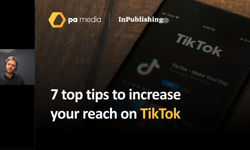
Instagram has become so synonymous with social media use, it’s impossible to imagine a landscape without it. For my generation, it’s even entered our lexicon: ‘Instagrammable’ became the new ‘picturesque’ to describe travel hotspots and ‘feed worthy’ is a compliment given to our friends’ most flattering photos. It’s no wonder it’s often in the front line of a magazine’s publishing strategy, but what exactly made the app take over the world, and why is it still so important?
Instagram as we know it
In October 2009, computer programmer Kevin Systrom began work on a check-in app called Burbn. He was joined by Mike Krieger the following April, and rebranded his work to the photo-sharing Instagram as we know it in October 2010. While its use goes hand-in-hand with smartphones, the name comes from a slightly archaic play on ‘instant camera’ and ‘telegram’.
In April 2012, Instagram’s one billion dollar takeover by Facebook (now Meta) made history; how could a still emerging app with no revenue and a team of 13 be valued so high? The magic number was chosen because Zuckerberg valued Instagram as one percent of Facebook at the time, which had a private market valuation of about $100 billion. The app may have been in its toddler stage, with around 25 million users to Facebook’s hundreds of millions, but as Facebook was still growing rapidly, Instagram had potential too.
Silicon Valley sceptics may have been concerned over the huge price tag and what it would mean for startup valuations in the future, which was certainly not unjustified: in fact, in 2013, the term ‘unicorn’ was coined for billion dollar startups, when just 39 companies earnt the name. This year, the number surpassed 1,200, and includes Airbnb, Gett, and Shein.
Although the price tag shook the stock market, nowadays, nobody can deny Instagram’s might; in 2022, Instagram made an estimated $51.4 billion in revenue, accounting for 44% of Meta’s total revenue, so it certainly paid for itself. Even startup investor Shervin Pishevar tweeted that a billion dollars was really a bargain: “Instagram would be worth $5B+ today. It buttressed FB stock & gave its mobile strategy legs. Insanely smart, cheap acquisition by Zuck.” Of course, Systrom wasn’t exactly low on pocket money after the deal.
How has Instagram evolved?
‘Filters’ fascinated the world when it made grainy iPhone 4 photos seem that little bit cooler and more creative. What we didn’t have was a 48mp camera, what we did have was the Valencia filter. It’s important to note that the dedicated Instagram fans from earlier eras used it truly for a love of photo sharing and keeping up with their friends. There was no algorithm to make you go viral, influencers didn’t exist, and hashtags were in their early stages. Those loyal Instagram users are a core audience for publishers: do not forget them. While it is crucial to onboard and utilise every update, there will always be those that remember its beginnings, and won’t immediately engage with newer features.
In 2016, Instagram launched ‘Stories’ to compete with Snapchat’s 24 hour disappearing photos and videos, making the app even more addictive to tap through. The same year, live video was introduced. Both these features prioritised authentic, real-time content, and diversified what we saw on the app. I mentioned earlier the meaning of ‘feed worthy’, and publishers and brands may have been a little apprehensive to show their less polished work, albeit on Stories, because why would they publish anything that wasn’t ‘worthy’? Fast forward a few months, and we saw banter in offices, entertainment polls, takeovers by celebrities, and staffers trying on beauty products in real time.
And before ‘Lives’, celebrities had never managed to get so intimate with their audience. A concert with thousands of people or a rushed book signing and photo opportunity was nothing in comparison to spending an hour answering questions in real time and talking about their day. Instagram became even more instant. The increased love of authenticity coincided with mobile cameras getting better and better: snapping on the latest phone often looked as good as professional cameras. For publisher social teams, this was exciting. No chunky video cameras needed – we could send someone with a phone to go behind-the-scenes at a new launch or a celebrity-packed red carpet, and the footage would still be good enough to showcase on site or other platforms.
How is it still relevant to publishers?
As a social media manager, I am conscious of four KPIs: traffic to website, brand awareness, the foundations of commercial partnerships, and connecting with our audience. Instagram, uniquely, allows us to hit all four.
Although Facebook, WhatsApp, and YouTube take the top three spots, Instagram is still the fourth most popular social media app in the world, and according to Statista: “In 2021, there were 1.21 billion monthly active users of Meta’s Instagram, making up over 28 percent of the world’s internet users. By 2025, it has been forecast that there will be 1.44 billion monthly active users of the social media platform, which would account for 31.2 percent of global internet users.” A whopping third of everyone on the internet. The forecast of millions more users also proves the users are not dormant, and you can approach every single generation.
When has Hello magazine stood out?
Hello magazine’s audience has always been vast and diverse, but our core following engage best with all things Hollywood and luxury. The rise of the video was therefore an easy pivot; instead of static images of celebrities on red carpets, which of course is what drives fans to our print title, the A-listers and their gowns can come to life via Reels. Videos from Venice and Cannes Film Festivals, Met Gala, BAFTAs and Oscars, coinciding with reporters on the ground, puts Hello’s heritage brand firmly in the digital era.
Plus, nothing has spearheaded our engagement and follower count quite like huge royal occasions, and this year, after being well practised in weddings, babies, royal tours, and jubilees, we went all out on every aspect of King Charles’ coronation. We teased our on-the-ground coverage, and organised the team so that our socials would be covering every minute. A very different coronation planning to the last one, in 1953, no doubt.
Our videos on feed all weekend hit 31 million views, we gained about 20,000 new followers, and broke personal records for reach. Why did it work? We had authority and authenticity. Hello is already a trusted brand for all things royal, and, as the first coronation for 70 years, we couldn’t wait to make history… modern. For Stories, our royal editor Emily gave a rundown to camera every day, our website reporters headed out to each London event taking our followers with them, and we used US commentator Elizabeth Holmes to give an American insight for our US channels. Our glossy feeds captured every moment as it happened: King Charles being crowned, the Princess of Wales’ outfits, and the royal children in attendance. Fans cared just as much for Prince Louis’ cheekiest moments as they did the pomp and ceremony – a true indicator of authenticity and authority.
The rise of short form video, through TikTok and YouTube shorts as well as Instagram, has given everyone with a smartphone the ability to be a filmmaker. Editing on a phone is the perfect way to engage with the viewer: you are seeing it exactly how they will. For Reels and Instagram stories, this is crucial, and even if a video has been edited externally, the final proof should always be looking at it on a phone. Instagram is a mobile, not desktop, app.
What is the future of Instagram?
This year, following Elon Musk’s controversial Twitter decision to do the same, Instagram introduced the option to pay for verification and added features on the app. While I understand their justification of preventing bots and proving the account is authentic, I believe it is setting an uncertain future for social media. We’ve all heard the phrase, ‘if you’re not paying for the product, you are the product’, and as users, we have had to come to terms with how our data is being used, because we have essentially been sold to advertisers. The more and more people that pay for the product of Instagram, the more we become customers. If the customer is indeed always right, are users now more powerful? Or do blue ticks legitimise accounts with no real expertise? In an era of dangerous information online, we have to be careful with this.
One thing’s for sure though – publishers with a print title behind them, or strong brand history, always have and always will be deserving of a badge of authority and authenticity. With the lines being blurred between verified and unverified users, publishers are now more important than ever.
Instagram has to be applauded for trying everything, and keeping content creators, brands and publishers on their toes. While there has been a rise of other social platforms, it has only gone from strength to strength, both pioneering new features and also scooping up inspiration from others. Stories inspired by Snapchat was a huge success. Reels inspired by TikTok is hugely popular. However, Threads, to rival Twitter, lost 80% off its users within a month. Broadcast channels are new and seemingly unique to the app – so time will tell. Zukerberg’s one billion dollar investment wasn’t a self-fulfilling prophecy: it didn’t take off because of its surprising price tag, it took off because it kept up with its users, their smartphones and the wider social media world.
This article was first published in InPublishing magazine. If you would like to be added to the free mailing list to receive the magazine, please register here.










